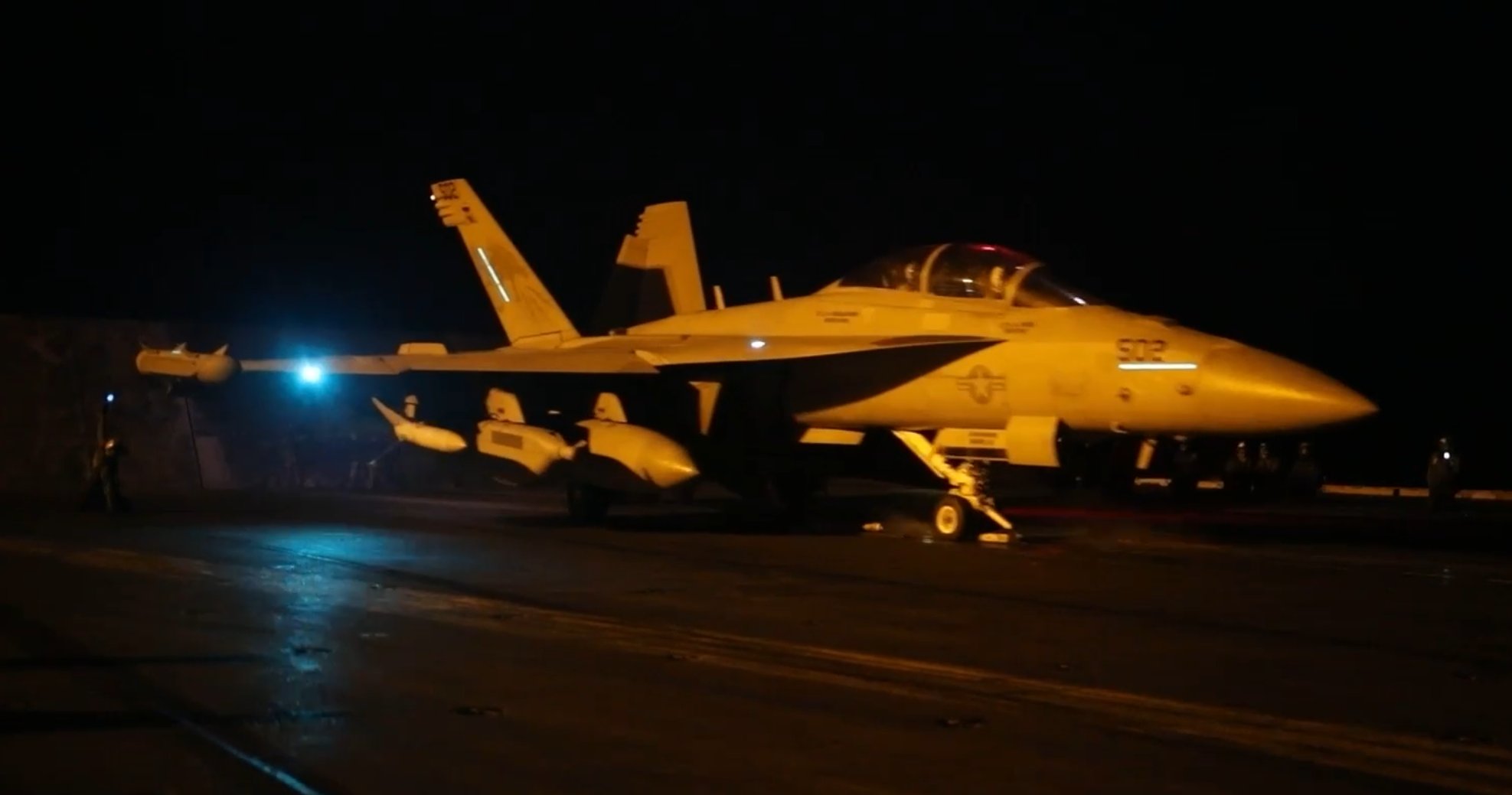The US Navy is reportedly using the E/A-18G Growler electronic warfare (EW) variant of the F/A-18 Super Hornet for its air strikes on the Houthis in Yemen since the group is armed with surface-to-air missiles, drones, and other conventional weapons.
The Houthis’ relative technological superiority over the last few adversaries the US fought, like Al Qaeda or the Taliban, has forced a more cautious and disciplined use of capital weapons as if fighting a peer adversary.
The US on January 17 designated the Houthis as a Specially Designated Global Terrorist group.
Possessing an array of older, legacy air defense (AD) missiles, cheap yet effective Iranian drones that are usually shipped in disassembled forms, and some relatively advanced series of missiles and UAVs, the Houthis survived the combined military might of the Kingdom of Saudi Arabia (KSA) and the United Arab Emirates (UAE) in the eight-year-long civil war.
The group shot down Royal Saudi Air Force (RSAF), Yemeni, Emirati, Sudanese, Bahraini, Jordanian and Moroccan F-15s, AH-64 Apaches, Su-22s, MiG-29s, F-16s and several American MQ-9 Reaper drones.
Many of the shootdowns also included Chinese-origin Wing Loong-II and CH-4 drones used by RSAF. The Houthis used SA-6 (Russian 2K12 KUB missiles) or shoulder-fired Man Portable Air Defense Systems (MANPADS).
Enter ‘Jack Of All Trades’ EA-18G Growler
A video released by the USS Central Command showed an E-2C Hawkeye Airborne Warning Control System (AWACS), FA-18EF Super Hornet, and the EA-18G Growler electronic warfare (EW) taking off from the USS Dwight D. Eisenhower in nighttime raids.
“These strikes are intended to degrade Houthi capability to continue their reckless and unlawful attacks on US and UK ships as well as international commercial shipping in the Red Sea, Bab Al-Mandeb Strait, and the Gulf of Aden,” the Central Command said in a statement.
However, the loadout of the EA-18G Growler is intriguing and reflects upon the adversary’s military capability (Houthis) since such a sophisticated platform – one of the best in its class – is pressed into service.
The Growler appears to carry standard standoff and electronic surveillance payload. The nighttime and single-angle photo from the right side blocks a view of the jet’s underside and left side.
The jet’s leading system is the Northrop Grumman AN/ALQ-218 radar warning receiver, with its wingtip-mounted antennae/pods being its signature feature used to identify the aircraft. Antennas are also located on both sides of the nose, engine bays, and aft of the cockpit, providing a 360-degree azimuthal cover.
Northrop Grumman says the ALQ-218 “utilizes a unique combination of short and long baseline interferometer techniques along with a patented passive ranging algorithm to provide precision geo-location of all ground-based emitters.” The ground-based emitters are air defense radars located on land.
An AGM-88 High-Speed Anti-Radiation Missile (HARM) can also be seen on the outer pylon, and an ALQ-99 Tactical Jamming System (TJS) pod on the middle rail. The Growler carries five such pods, two under each wing and one on the underbelly.
It also has an ALQ-227 Communications Countermeasures Set, while its primary sensor is the APG-79 Active Electronically Scanned Array (AESA) radar.

Use In Fighting Houthis
The Houthis are among the few non-state actors who command a credible conventional military element in terms of missilery in its arsenal. They have periodically displayed their inventory in parades.
Besides Iran being the “key source for Houthi anti-ship missile technology,” it has a “few obsolescent Soviet-era systems and slightly less antiquated Chinese designs,” according to a January 4 report by the International Institute of Strategic Studies (IISS).
The report names the S-75 Dvina surface-to-air missile, acquired from pre-war Yemeni army stocks, that it has converted for anti-ship roles using an Iranian conversion kit. Assuming the rocket can still engage aerial targets even after the conversion, it can significantly threaten aircraft over Houthi-held territory.
Iranian improvisation and steady military technological assistance also potentially put high-flying aircraft in these missiles’ envelopes, and pilots can not take refuge at altitude. Flying at medium and low heights threatens aircraft for sure, and this is possibly a standard operating height since British and US jets cannot undertake only standoff strikes while engaging an adversary like the Houthis.
The US faces limitations in battle damage assessment and ground-based surveillance and target identification in Yemen that prevent it from conducting that kind of war. This is where the Growler provides standoff electronic support, a broad ground air defense picture, and situational awareness while also being ready to release a HARM in case a ‘radar’ lights up.
- The author can be reached at satamp@gmail.com
- Follow EurAsian Times on Google News




